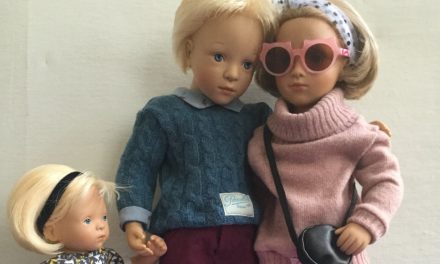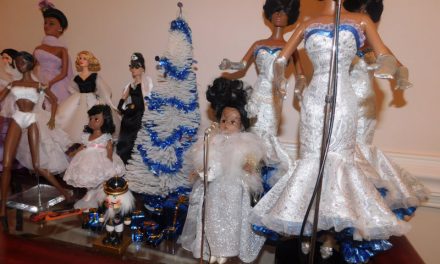By Jan Foulke
Q: I found this sweet antique boy doll and just fell in love with him. He is a wonderful change from the usual antique girls that I collect. There are no marks on him. Is this a parian doll? Can you tell me anything about him?

A: I, too, have always loved these charming boy dolls. Collectors call this model the American Schoolboy. They’re especially fun as there are few real boy dolls of this period. Most boy dolls are just the same as the girl dolls, only dressed in boy’s clothes, but these Schoolboys really are boy dolls. American Schoolboy is not a trademark name; it’s just a name invented by early doll collectors that stuck as a convenient way to identify this style.
This model dates to the 1880s and 1890s and was made in Germany. It’s usually of excellent quality, though the maker is unknown. I suspect several companies made similar models, as there is often some variation in the hair detail, though all of the American Schoolboys have short molded hair with bangs. They are usually blond or very light brown in color; very seldom dark brown. There is usually a side part in the hair and lots of detail in the modeling with a part and comb marks, particularly at the back of the crown.
They always have inset glass eyes and a closed mouth with hint of a smile. The facial painting is done with great care, including multi-stroked eyebrows and shading strokes on the lips. Most Schoolboys are tinted bisque shoulder heads placed on cloth or kid bodies. They aren’t what collectors call “parian.” Parian dolls have white or nearly white complexions; Schoolboys” have a tinted complexion, so they are just called tinted bisque.
A few were made with socket heads for jointed composition bodies. These are particular favorites with collectors because the bodies are posable and easier to handle than stiff cloth or kid bodies. It’s wonderful that you have found a new type of antique doll to enjoy!
Jan Foulke (retired) is an authority on antique and vintage dolls, with over 40 years of experience in the field. She’s the author of the full-color reference book “Jan Foulke’s Guide to Dolls.” Subscribe now to read Foulke’s columns in DOLLS online archive of past issues!






